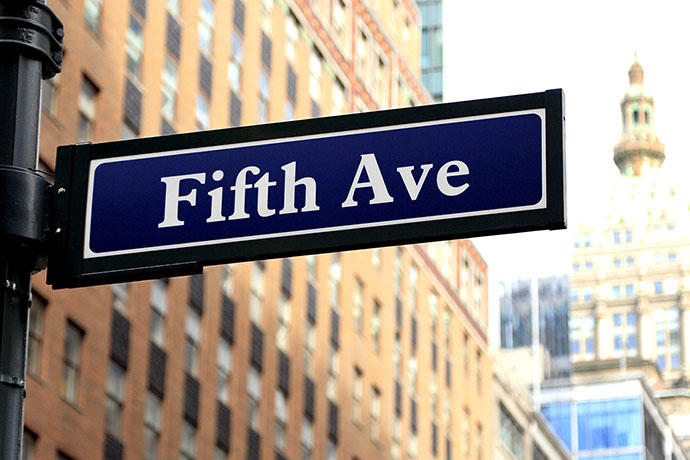Trending
Commercial market report
From Fifth Avenue’s (relative) fall from grace to the top lenders in commercial real estate, a look at the biggest trends

Fifth Avenue slips from first place in global retail markets
New York’s Fifth Avenue has lost its crown as the world’s most expensive retail street, according to an annual ranking by Cushman & Wakefield. As of the second quarter of 2018, Hong Kong’s Causeway Bay held that record, with rent costing $2,671 per square foot, compared with $2,250 per square foot in Manhattan’s retail mecca. Although rent on Upper Fifth has been falling for several years, there was an especially steep decline of 24 percent between the spring and fall of 2018 as availability increased, according to a report from the Real Estate Board of New York. REBNY put the average Fifth Avenue rent at $2,973 in the fall, down from $3,900 earlier in the year. London and Paris placed third and fourth, respectively, in the global retail ranking, with $1,744 a square foot on New Bond Street and $1,519 per square foot on the Avenue des Champs-Élysées. Milan’s Via Montenapoleone ($1,466), Tokyo’s Ginza ($1,219), Sydney’s Pitt Street Mall ($964), Seoul’s Myeongdong ($908), Zurich’s Bahnhofstrasse ($854) and Vienna’s Kohlmarkt ($515) rounded out Cushman & Wakefield’s top 10 list.
Hotel market slows ahead of year’s end
Despite having a strong showing during the first half of the year, New York’s hotel market slowed in the third quarter of 2018, according to the Manhattan Lodging Index by PricewaterhouseCoopers. In the third quarter, a slight decline in occupancy, down 0.7 percent year-over-year, to 90.4 percent, and modest growth in room rates, which were up 0.8 percent, to $279, canceled each other out for flat growth in RevPAR, or revenue per available room. The divergence between occupancy and pricing was more pronounced for luxury hotels, where occupancy fell 1.7 percent, but average room rates increased 3 percent, to $474, for a total RevPAR rise of 1.2 percent. Sean Hennessey, CEO at consulting firm Lodging Advisors, said that overall the hospitality sector is on an upward trend despite the up-and-down numbers. He cited initial reports that show pricing grew between 2 and 4 percent in the fourth quarter of 2018. “We’re expecting some improvement [in 2019], but not rapid improvement,” Hennessey added.
Manhattan office rents stay flat amid strong leasing activity
Data collected by CBRE showed robust November leasing activity in Manhattan, although average rents remained flat year-over-year, coming in at $73.33 per square foot. But rent growth was not evenly distributed across submarkets. In Midtown South, rent passed $80 for the first time, hitting $81.48, a 13 percent increase over November 2017. That made up for a 2 percent decline in year-over-year average rents in Midtown and Downtown, to $78.37 and $60.60, respectively. William Silverman, head of investment sales at Hodges Ward Elliott, said that one outcome of the rent divide is Downtown catering to refugees from Midtown South. (In 2018, 57 percent of relocations to Downtown were from Midtown South, compared with a 30 percent average in previous years, according to JLL.) Silverman said flat rents didn’t fully reflect market activity and demand. Midtown South used to be the marketplace’s alternative,” said Silverman, noting that over the last decade, rents rose to such a degree that many current tenants can’t renew their leases. “The only place those tenants have left to go is Downtown.”
NYCB tops list of CRE lenders
New York Community Bank was the top commercial lender during the first three quarters of 2018, surpassing $4 billion in loan originations, according to a report from CrediFi. That figure represents a 72 percent increase over NYCB’s loan originations in 2017. The uptick is likely a result of recent updates to Dodd-Frank Act rules, which increased the threshold at which big banks are considered “systemically important” from $50 billion in assets to $250 billion. Of the $67.6 billion in total volume for commercial real estate loans in the New York area, regional banks such as NYCB provided 33 percent of the volume, followed by foreign banks, at 31 percent, and national banks, at 27 percent. “National banks pulled back slightly this year,” said the report’s author, CrediFi head of data Alex Veksler, who noted the absence of Citigroup, Goldman Sachs and Morgan Stanley from the top 10 lenders. Two new lenders on CrediFi’s list were foreign banks — France’s Natixis and Germany’s Landesbank Baden-Württemberg — both of which more than doubled the volume of loans they originated when compared to 2017.




